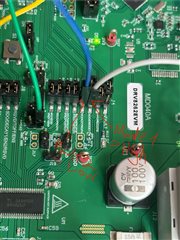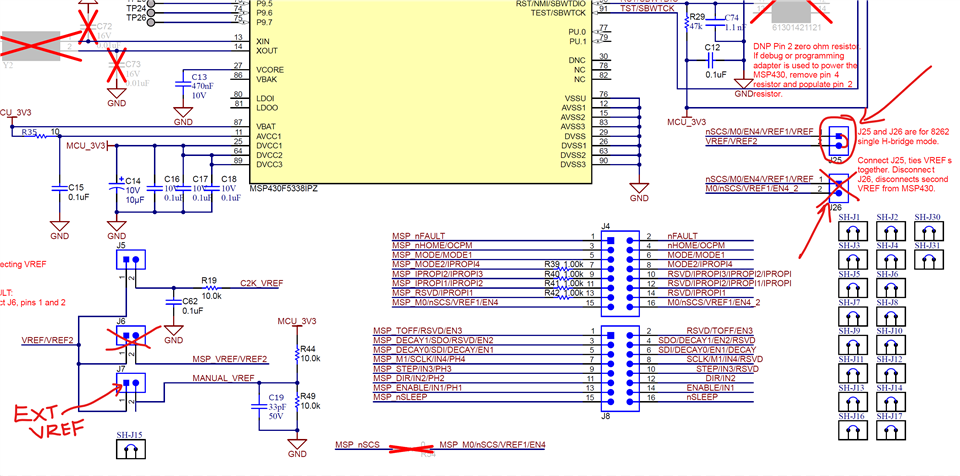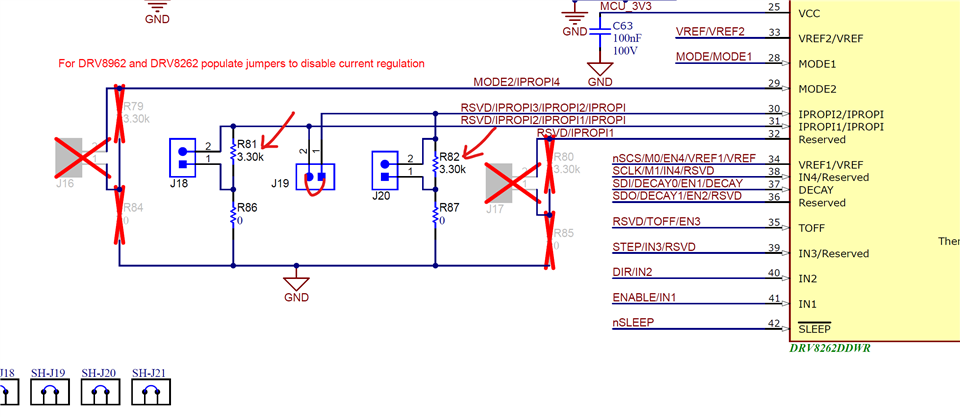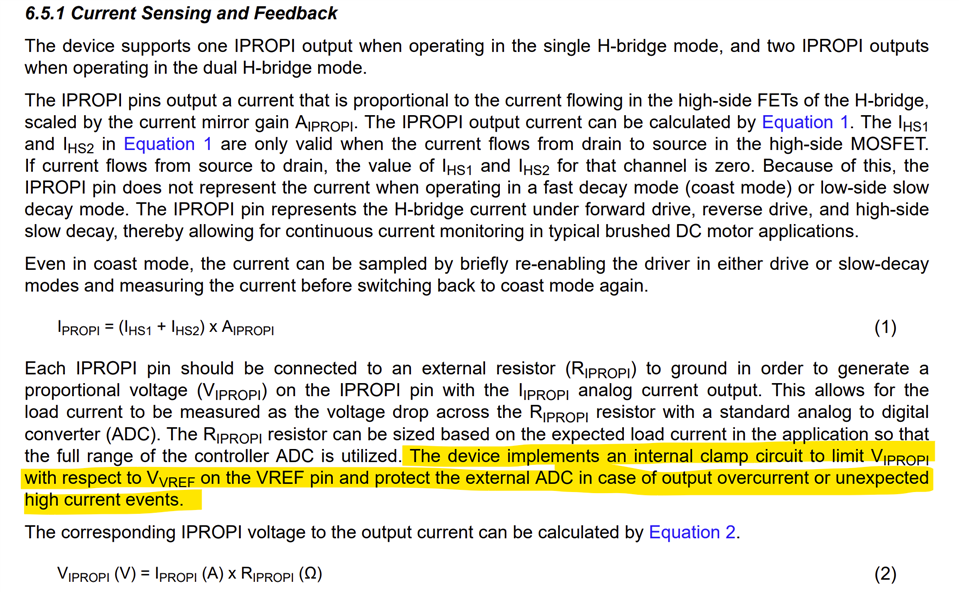Other Parts Discussed in Thread: DRV8262
Tool/software:
Hallo zusammen,
ich möchte den DRV8262EVM im Single H-Bridge Mode mit dem PH/EN-Interface betreiben.
Laut Datenblatt habe ich folgende Einstellungen vorgenommen:
-
MODE1 = HIGH → Einzelne H-Brücke
-
MODE2 = LOW → PH/EN-Schnittstelle
Allerdings funktioniert das Ganze nicht wie erwartet – daher meine Fragen:
1. Habe ich die richtigen Pins angesteuert?
Ich habe ein Bild von meinem Aufbau angehängt, auf dem zu sehen ist, welche Pins ich auf HIGH bzw. LOW gelegt habe.
Trotz der oben genannten Einstellungen (MODE1 high, MODE2 low) zeigt der Treiber keine Reaktion.
Kann es sein, dass ich die falschen Pins geschaltet habe?
Oder muss man noch etwas Zusätzliches beachten?
(Modus 1 = graues kabel) (Modus 2 = blaues Kabel)
2. Wie kann ich VREF korrekt erhöhen?
Ich möchte den maximalen Strom erhöhen, den der DRV8262 liefern darf.
Im Datenblatt steht, dass man dazu:
-
den Jumper J6 entfernen soll (um die interne Verbindung zu kappen)
-
und dann an J5 (oberer Pin) eine externe Spannung (z. B. 1,5 V oder 3,3 V) anlegen kann
Ich habe also J6 entfernt und 3,3 V an J5 angelegt – aber es passiert nichts.
Die Spule zieht weiterhin kaum Strom, es wirkt so, als würde VREF ignoriert oder blockiert werden.
️ Sind das überhaupt die richtigen Pins, um VREF zu entkoppeln und manuell zu setzen?
Muss ich zusätzlich etwas beachten (z. B. Pull-Down, Schutzwiderstand, Aktivierung über Software)?
Beobachtung
Wenn ich testweise MODE2 = HIGH setze (also den Treiber in den IN/IN-Modus bringe),
bekommt die Spule ein Ausgangssignal – also der Treiber reagiert grundsätzlich.
Aber es fließen nie mehr als ca. 0,5 A, selbst bei einer Versorgungsspannung von 5 V, 9 V oder 12 V.
️ Liegt das wirklich an VREF?
Wird der Strom intern so stark begrenzt, weil VREF zu niedrig ist?
Oder könnte auch etwas anderes dafür verantwortlich sein?
3. Strommessung – IPROPI
Ich möchte die Stromaufnahme der Spule über den IPROPI-Pin auslesen und mit einem STM32 messen.
Laut Datenblatt gibt es im Single H-Bridge Mode zwei IPROPI-Pins, die man miteinander verbinden soll.
️ Welcher PIN auf dem EVM-Board ist das konkret?
️ Kann ich diesen direkt mit einem ADC-Eingang (z. B. A0) meines STM32 verbinden?
️ Brauche ich einen Spannungsteiler oder ist das Signal bereits angepasst?
️ Muss ich einen externen Shunt-Widerstand verbauen oder ist der im Board bzw. im IC integriert?
Ich freue mich über jede Hilfe – insbesondere wenn jemand den Treiber schon erfolgreich in dieser Konfiguration betrieben hat.
Viele Grüße
Dennis Formisano








